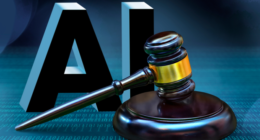5 Key Rules Governing AI Technology Today
As artificial intelligence (AI) becomes increasingly integrated into our daily lives, the need for clear and enforceable rules has never been more important. In 2025, governments, industries, and institutions are setting stricter standards to ensure that AI technologies are used ethically, securely, and responsibly. Here are the five key rules governing AI technology today.
1. Transparency and Explainability
Why Transparency Matters
One of the primary concerns with AI is its “black box” nature. Users and regulators demand that AI systems provide clear explanations for their decisions. Transparency ensures trust and accountability, especially in critical sectors like healthcare, finance, and criminal justice.
Global Standards
Frameworks like the EU AI Act and the U.S. AI Bill of Rights stress the importance of explainability. AI developers are now required to build models that can justify outputs in a human-understandable way.
2. Data Privacy and Security
Protecting User Data
AI systems rely on massive amounts of data. Governments have enforced strict data protection rules, such as the GDPR in Europe and CCPA in California, to ensure that AI does not misuse personal information.
AI Compliance
Modern AI platforms must comply with encryption standards, data anonymization, and secure storage protocols to avoid breaches and unauthorized access.
3. Bias and Fairness Regulations
Addressing Discrimination
AI models can unintentionally reflect human biases if trained on biased datasets. Regulators now require fairness audits to identify and mitigate bias in AI algorithms.
Equitable AI Use
Companies must ensure that their AI systems do not discriminate based on race, gender, age, or other protected attributes. Inclusive data collection and continuous monitoring are now industry best practices.
4. Accountability and Legal Liability
Who’s Responsible?
As AI systems become more autonomous, questions about responsibility arise. Laws are evolving to assign liability to developers, vendors, or users when AI causes harm or error.
Corporate Governance
Companies are required to implement internal AI governance boards and document their AI decision-making processes to ensure legal compliance and public trust.
5. Restrictions on High-Risk AI
Controlling Powerful Technologies
Governments are setting strict limits on the use of high-risk AI systems—such as facial recognition, autonomous weapons, and surveillance tools. These technologies must pass rigorous evaluations before deployment.
Regulatory Sandboxes
To promote innovation while ensuring safety, regulatory sandboxes allow developers to test high-risk AI in controlled environments under official supervision.
Conclusion
AI is transforming the world, but it must be governed with strong, ethical frameworks. These five rules—transparency, privacy, fairness, accountability, and risk control—are essential to ensure a safe and trustworthy AI future. As regulations evolve, businesses and developers must stay informed and compliant to thrive in the new AI landscape.








